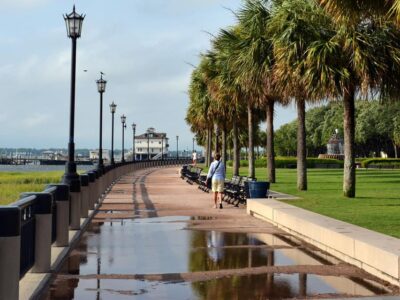The Bureau of Land Management (BLM) recently announced an updated proposed plan to use public land to increase solar utility capacity. The Final Programmatic EIS and Proposed Resource Management Plan Amendments, which became available for a 30-day protest period on Aug. 30, are set to grant access to more than 31 million acres of public land across 11 western states for solar development. The plan builds off a 2012 roadmap designed to increase solar on public land, but this latest revamp intends to keep up with the technological advances in photovoltaic (PV) technology.
Many nature conservationists see balance as essential in how BLM will execute the updated solar deployment strategy. The Teddy Roosevelt Conservation Partnership signaled support for the Western Solar Plan. According to a BLM press release, it will allow PV development on “previously disturbed lands” or closer to where transmission lines lie, and protected lands and wildlife habitats will be avoided. However, how that will be carried out remains to be seen.
“Renewable energy buildout on public lands must be thoughtful, cautious, and informed, ensuring that we conserve important wildlife habitat, protect hunting and fishing opportunities, and avoid impacts to cultural and Indigenous resources, as we strive for cleaner energy,” Bailey Brennan, public lands counsel with the National Wildlife Federation, said in a press release. “The BLM’s improved approach to siting and permitting solar development will help achieve these goals, balancing public lands’ many uses.”
Photo Courtesy BLM Southern Nevada District Office
Conservationists hope that the use of solar energy will allow wildlife to flourish again. The latest plan extends proposed solar projects in Idaho, Montana, Oregon, Washington, and Wyoming — all states with several federally protected natural lands.
Trout, buffalo, elk, foxes, birds, bears, and other species reside in these areas, but climate change has caused habitat loss. According to the World Wildlife Fund, damming rivers for hydroelectricity has been cited as a leading cause contributing to the decline of river fish species. Using solar could reduce the need for hydroelectric power, allowing fish like trout and salmon to return to previously visited breeding grounds.
Photo Courtesy Brandon
“Trout populations throughout the West face many challenges, not the least of which is climate change and land uses that place additional stress on shrinking native and wild trout habitat,” Tasha Sorensen of Trout Unlimited said in a statement. “While the plan does not include specific criteria for important fish habitat, we are encouraged that the exclusions would preclude development in areas subject to conservation agreements, such as habitat for many native trout species.”
Public solar is part of the federal renewable energy plan that uses less fossil fuel and coal. The air quality improvements and reduced land could have profound climate impacts if all goes according to plan. “Through extensive planning and collaboration, we’re not only protecting our public lands but also ensuring that permitting for solar projects moves faster and more efficiently, avoiding conflicts and striking the right balance as we advance clean energy and safeguard the environment,” Dr. Steve Feldgus, principal deputy assistant secretary for Land And Minerals Management, said in the BLM’s official press release.





